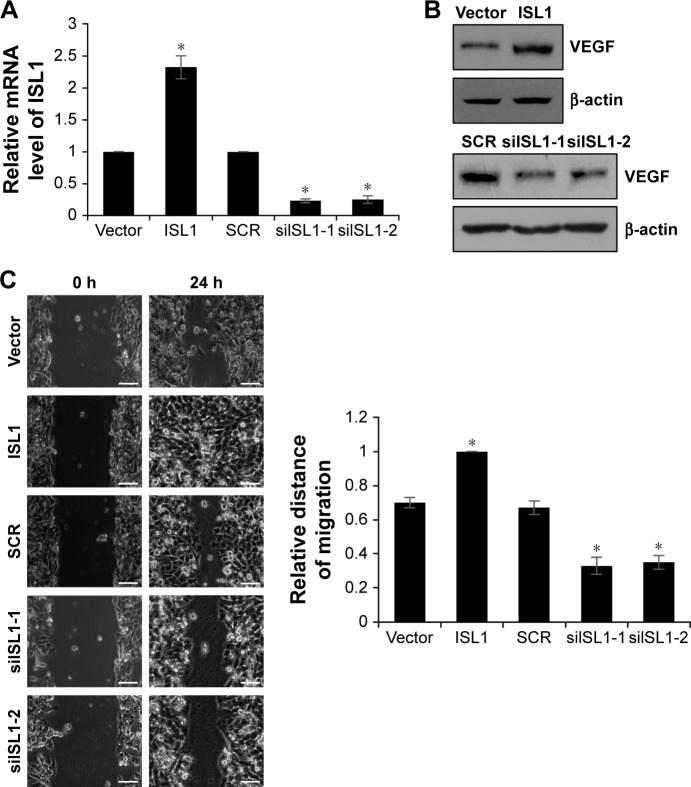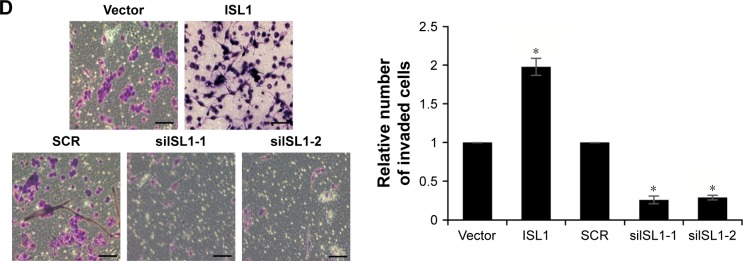Figure 5.
ISL1 facilitates breast cancer cells migration and invasion.
Notes: (A) MDA-MB-231 cells were treated with vector, ISL1 or SCR, ISL1 siRNA (siISL1), respectively. The mRNA level of VEGF was detected by qRT-PCR. (B) ISL1 was overexpressed or knocked down in MDA-MB-231 cells; the protein level of VEGF was detected by Western blotting. (C) Wound healing analysis was used to detect the role of ISL1 in cell migration. ISL1 was overexpressed or knocked down in MDA-MB-231 cells. The graph indicates the relative distance of migration. Scale bars =200 μm; *p<0.05, ISL1 vs vector, siISL1 vs SCR. (D) Transwell invasion analysis was used to detect the role of ISL1 in cell invasion. ISL1 was overexpressed or knocked down in MDA-MB-231 cells. The graph indicates the relative number of invaded cells. Magnification: 20×, scale bars =200 μm. *p<0.05, ISL1 vs vector, siISL1 vs SCR.
Abbreviations: qRT-PCR, quantitative real-time polymerase chain reaction; SCR, scramble siRNA; VEGF, vascular endothelial growth factor.


